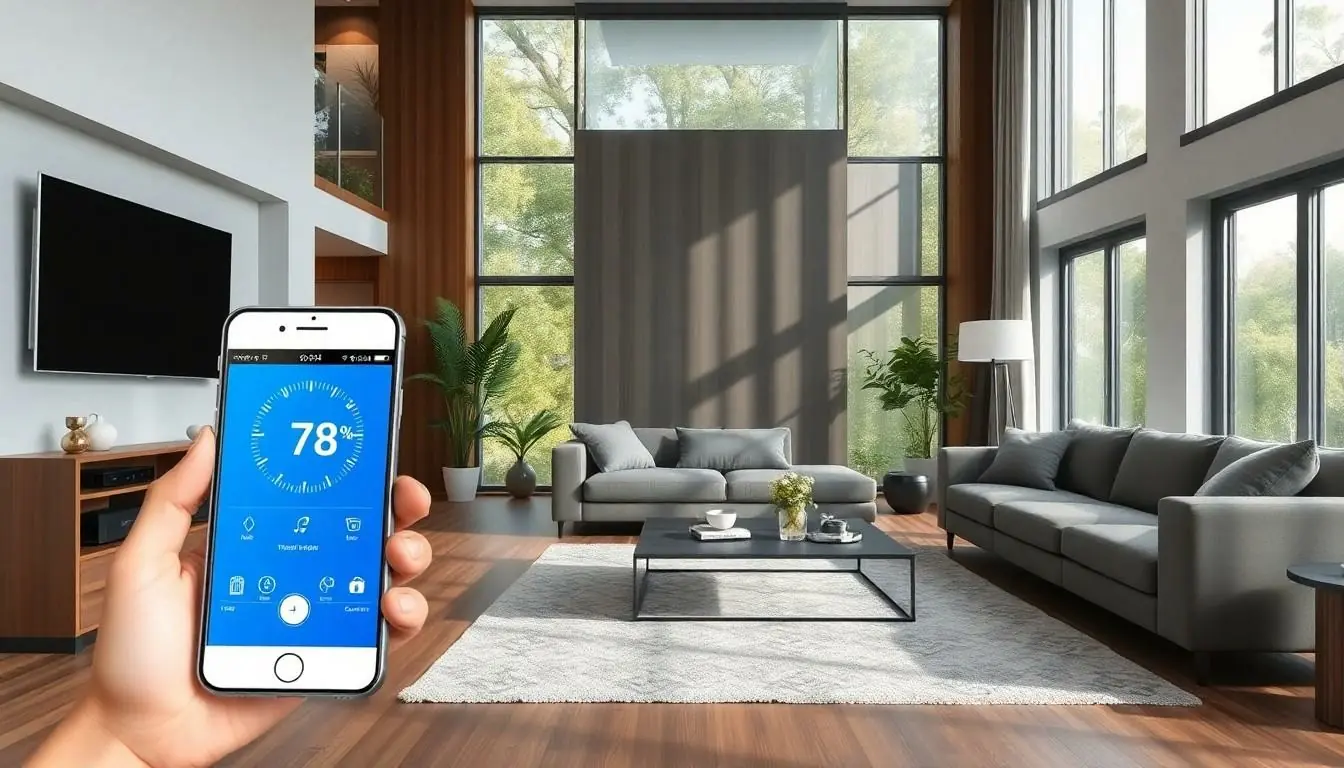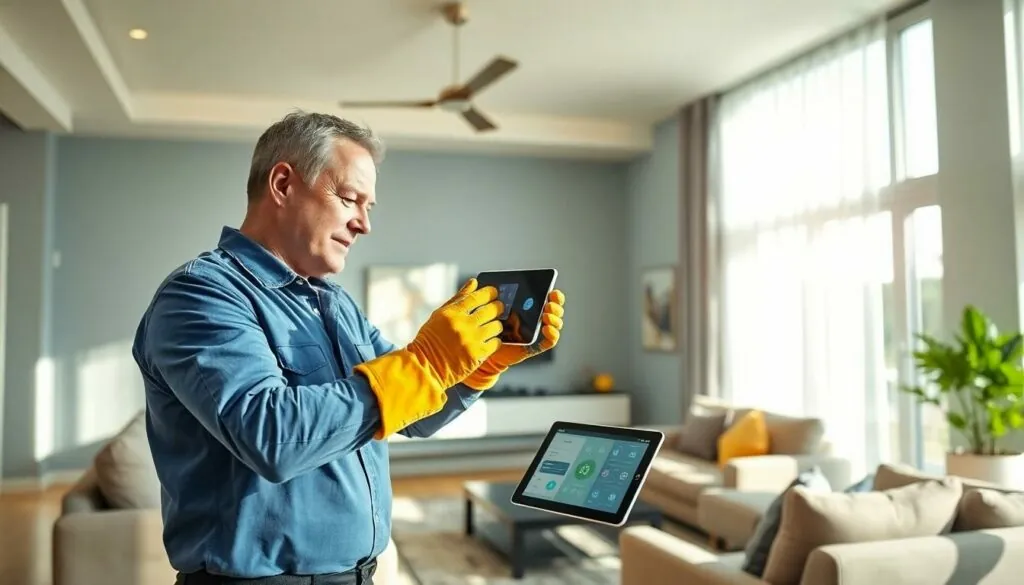Table of Contents
ToggleImagine walking into your home and having it respond to your every whim. Lights dim at your command, the thermostat adjusts itself, and your coffee brews before you even get out of bed. Welcome to the world of smart home electrical installation, where convenience meets cutting-edge technology.
What Is Smart Home Electrical Installation?
Smart home electrical installation involves integrating advanced technology into electrical systems for enhanced control and convenience. It enables homeowners to automate various tasks, improve energy efficiency, and streamline daily routines. Common features include smart lighting systems, smart thermostats, and smart appliances, all interconnected for seamless operation.
Smart lighting systems allow users to remotely control light brightness and color using smartphones or voice commands. Examples include LED bulbs that adjust based on time of day or user preferences. These systems significantly enhance ambiance while reducing energy costs.
Smart thermostats optimize heating and cooling based on user patterns. They learn preferences over time, adjusting settings automatically to improve comfort and save energy. Many models offer remote access, enabling temperature control while away from home.
Smart appliances increase household efficiency. Devices like refrigerators, ovens, and washing machines can be monitored and controlled remotely. For instance, a smart oven can preheat while the user is on their way home, saving time.
Smart security systems provide peace of mind with features such as cameras and alarm systems, controllable via smartphones. Users receive real-time notifications and can monitor their home’s security from anywhere.
Integration of these technologies requires careful planning and professional installation. A skilled electrician ensures that all components function effectively and safely, adhering to electrical codes. Homeowners must assess their needs and consider future expansions when planning their smart home infrastructure.
Smart home electrical installation creates a network of connected devices, enhancing convenience, security, and energy management. Homeowners benefit from efficient systems that adapt to their lifestyles and preferences.
Benefits of Smart Home Electrical Installation

Smart home electrical installation offers numerous advantages, making daily life more efficient. Homeowners experience significant benefits in convenience and energy efficiency.
Enhanced Convenience
Smart home systems simplify managing household tasks. Users control devices like lights and thermostats from their smartphones or via voice commands. This convenience translates to effortless adjustments for lighting and temperature, enhancing comfort at home. Users also enjoy automation, where systems learn their routines, making life easier. Additionally, smart appliances provide the ability to monitor and manage them remotely. Coordinating different systems creates a seamless experience, giving homeowners more time for the things they love.
Increased Energy Efficiency
Energy efficiency significantly improves through smart home electrical installations. Smart devices optimize energy consumption by adjusting settings based on usage patterns. For instance, smart thermostats learn a household’s routine, reducing energy expenditure during inactive hours. Energy-efficient lighting also plays a role, automatically dimming or turning off lights when not needed. The result is lower utility bills and reduced environmental impact. Monitoring energy usage in real time empowers homeowners to identify and rectify inefficient practices. This proactive approach to energy management optimizes home performance while saving resources.
Key Components of Smart Home Electrical Systems
Smart home electrical systems consist of various interconnected components, enabling enhanced control and automation throughout the living space.
Smart Switches and Outlets
Smart switches and outlets offer remote access to lighting and appliances, allowing users to control them via smartphones or voice commands. These devices can integrate seamlessly with other smart home systems for automation. Many models include scheduling features, enabling users to set specific times for devices to operate. Enhanced energy monitoring capabilities help identify high-consumption appliances. Cost-effective solutions exist, catering to a range of budgets and needs.
Smart Lighting Solutions
Smart lighting solutions enhance ambiance and energy efficiency. Remote control features enable homeowners to adjust brightness and color, often through apps or voice commands. Many systems support integration with motion sensors, allowing lights to operate automatically based on occupancy. Additionally, they can create preset scenes for different activities, such as movie nights or gatherings. Energy savings come from smarter usage, reducing costs on utility bills.
Home Automation Hubs
Home automation hubs serve as central control points for smart home devices, providing an intuitive interface for managing multiple systems. These hubs support various protocols, enabling device compatibility across brands. Users benefit from unified control, simplifying the management of different home components. Additionally, automation allows for task sequences, such as locking doors and adjusting thermostats when leaving home. Enhanced security features often include alerts for unusual activity, reinforcing safety measures throughout the property.
Installation Process for Smart Home Electrical Systems
Executing a smart home electrical installation requires careful consideration. Proper planning and design are essential to ensure that the system integrates seamlessly into the existing electrical infrastructure.
Planning and Design
Effective planning begins with assessing specific needs. Homeowners should define goals, such as energy savings or enhanced convenience, and identify which smart devices to include. Creating a detailed layout helps visualize the placement of devices and wiring. Future expansions should factor into the design to enable easy upgrades. Strategic placement of smart hubs and devices optimizes network performance. Additionally, compliance with local building codes ensures safety throughout the installation process.
Professional vs. DIY Installation
Deciding between professional and DIY installation hinges on expertise and comfort level. Professionals possess the necessary skills to ensure safe, correct installation and adherence to electrical codes. They also provide valuable insights on device compatibility and system design. Conversely, individuals with technical knowledge may opt for DIY installation to save costs. DIY projects require a thorough understanding of electrical systems to prevent hazards. Generally, professional installation minimizes risks and provides peace of mind, while DIY can offer a personalized touch for tech-savvy homeowners.
Smart home electrical installation transforms everyday living by seamlessly integrating technology into households. With the ability to automate tasks and enhance energy efficiency, homeowners can enjoy a more convenient lifestyle. As these systems evolve, they not only improve comfort but also promote sustainability through optimized energy consumption.
Careful planning and professional installation are crucial for maximizing the benefits of smart home technology. By assessing individual needs and considering future expansions, homeowners can create a tailored smart home environment. Embracing these advancements not only simplifies daily routines but also paves the way for a more connected and efficient future.




